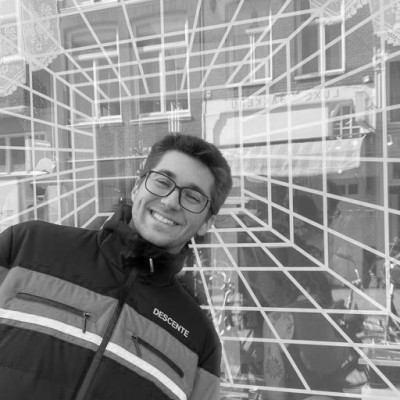5 key facts about this project
The primary function of this project is to provide a dwelling that does not merely accommodate its residents but also enhances their lifestyle through thoughtful design. The house embraces a concept of transparency and connectivity, utilizing a circular central courtyard that serves as the heart of the home. This innovative spatial organization invites an abundance of natural light and airflow, creating a comfortable atmosphere that promotes interaction among family members while maintaining an intimate connection with the outdoor environment.
Key elements of the design include a selection of materials that align closely with the principles of sustainability and durability. Concrete is employed for its structural integrity and longevity, forming the foundation upon which the rest of the project can thrive. In contrast, glass is used to create a seamless relationship between indoor and outdoor spaces, allowing for unobstructed views of the surrounding greenery and enhancing natural light penetration. Wood is incorporated into both the structural and aesthetic components, offering warmth and an organic quality to the interiors, while sand serves a practical role in thermal mass solutions, aiding in temperature regulation throughout the year.
The architecture integrates several unique design approaches that contribute to its overall effectiveness. For example, the layout encourages the use of multi-functional spaces, accommodating various household needs and fostering flexibility in how rooms are utilized over time. This fluidity is particularly relevant in modern living, where households may evolve in composition and requirements.
Passive environmental strategies are paramount in the design, showcasing an intentional focus on energy efficiency. The home is oriented to harness the benefits of natural light while avoiding overheating through thoughtful placement of openings that facilitate natural cross-ventilation. This strategic position aims to reduce reliance on artificial heating and cooling systems, showcasing the commitment to ecological sustainability.
Community engagement is another critical aspect of the project. The proposed layout enhances permeability within the neighborhood, promoting social interactions among residents while addressing the isolation typically found in suburban environments. The introduction of communal gardens alongside private outdoor spaces creates a vibrant landscape that invites both personal reflection and social gatherings.
In essence, "Where is My House?" encapsulates a progressive vision for residential architecture, one that harmonizes inhabitant needs with environmental stewardship. The project is a manifestation of architectural ideas that respect the context while inviting modern living practices. Its innovative material palette, adaptive use of space, and emphasis on connecting community with nature set a new standard for future residential developments.
Readers interested in exploring the architectural plans, sections, and overall designs of this project are encouraged to delve deeper into its presentations. Comprehensive insights into the architectural intentions and detailed layouts will enhance the understanding of this thoughtfully crafted residential design.


 Alexander TomÁŠ GuliŠek
Alexander TomÁŠ GuliŠek 























